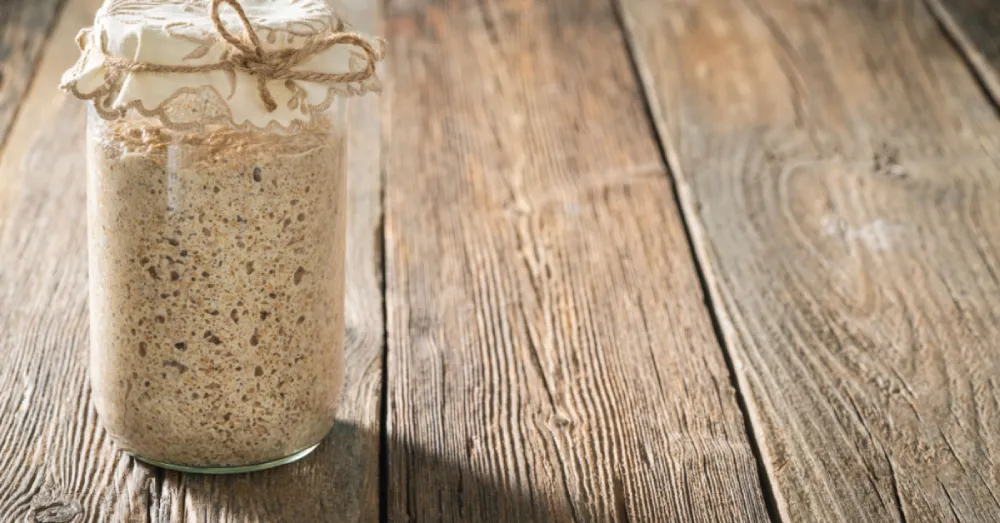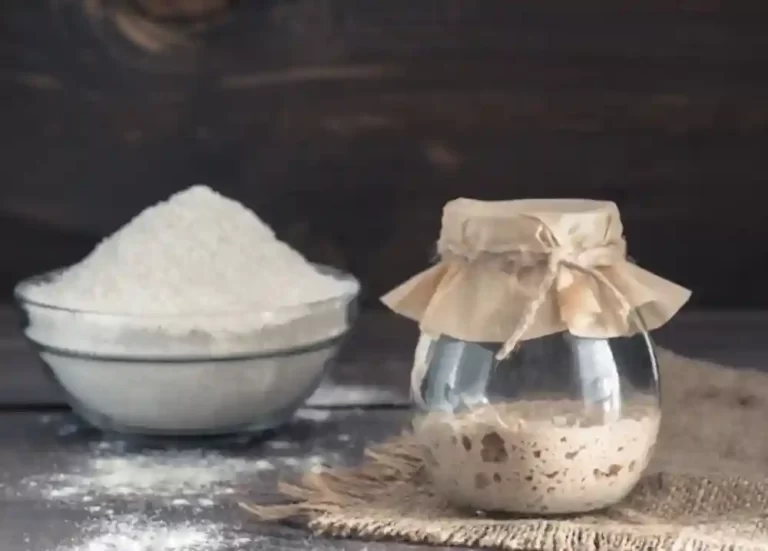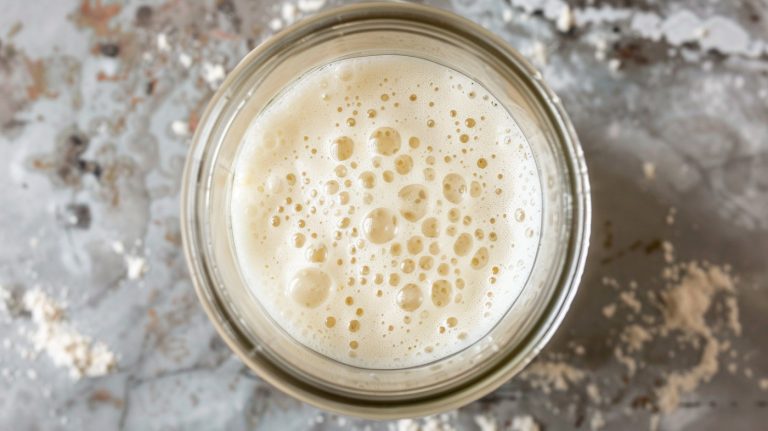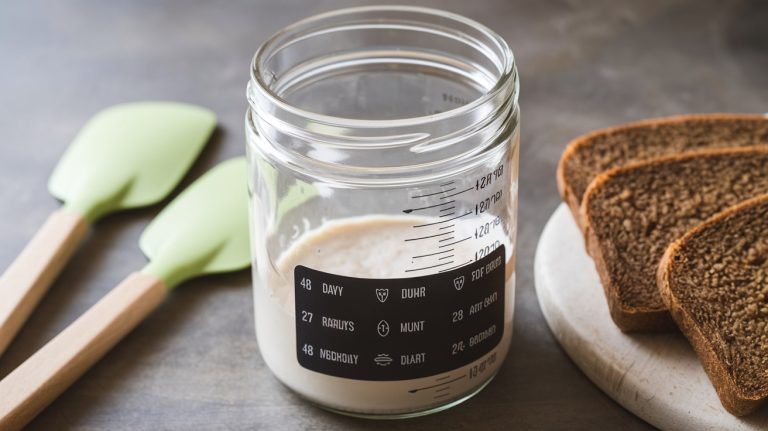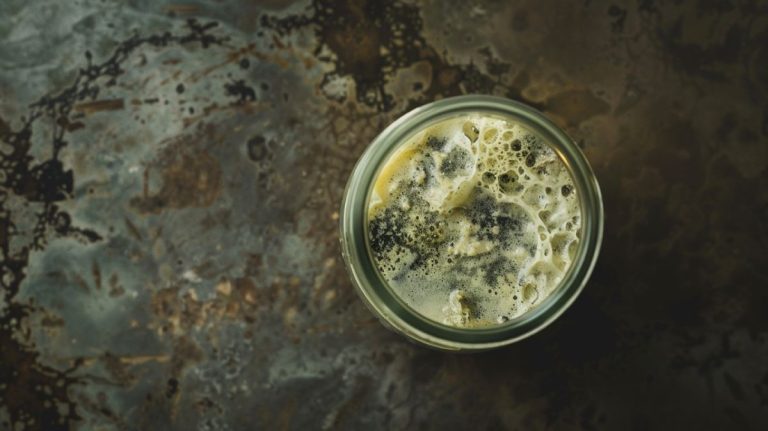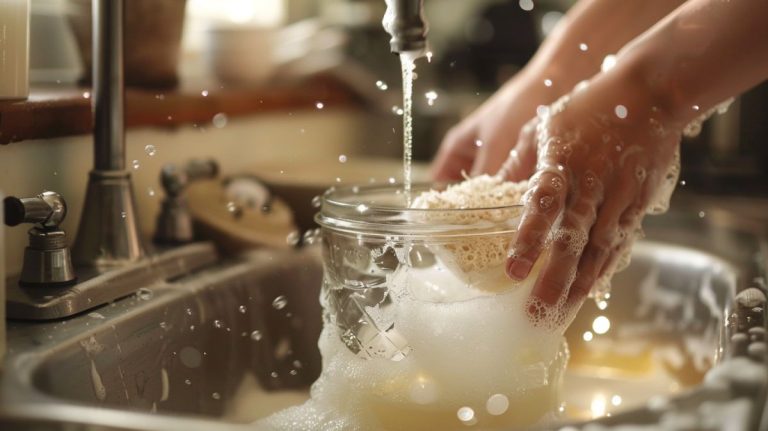Is Old Sourdough Starter Better: Facts vs Myths
Sourdough baking has gained global popularity among bread lovers and bakers alike. People in baking communities pass on a lot of stories about microbial legacies.
It’s easy to get sucked into the allure of ancient starters, but are they really better? How true are all these hypes?
The truth is, age alone isn’t a good indication of sourdough starter quality.
Like nurturing a living organism, maintaining a sourdough starter requires regular attention with the right ingredients. Regardless of age or lineage, it’s all about your love and dedication to nurturing your starter to thrive.
Passion, proper nutrition, and attention to detail can get amazing results. It’s craftsmanship and dedication that truly make your sourdough shine.
The myths and legends surrounding old sourdough starters are fascinating to explore. We’ll figure out the mystery surrounding old sourdough starters, analyze myths and legends, then figure out what science says.
Is old sourdough starter better? Do they carry the flavor of time and generations?
They’re mythical. Does the true essence of sourdough reside in the craftsmanship and care put into making them?
We’ll separate fact from fiction to reveal the secrets of these beloved sourdough companions. This isn’t just about satisfying our curiosity and understanding microbial ecosystems and culinary traditions.
Let’s debunk the myths around old sourdough starters on this discovery voyage.
The Life Within: Bacteria, Yeast, and Time
Have you ever had a sourdough starter in your fridge for a long time? Maybe you’re unsure if it’s still good or if you should start with a new one.
Well, you’re not alone. Many wonder if an old sourdough starter is better than a new one.
Sourdough starters have been used for thousands of years to make bread. They’re made by mixing flour and water and letting them sit out to capture wild yeast and bacteria from the air.

A vibrant community of bacteria and yeast is living within your sourdough starter, performing a complex dance that brings your bread to life.
Imagine a bustling cityscape teeming with diverse inhabitants. Think of your sourdough starter as a little city full of tiny living things.
Inside your sourdough starter is a whole community of microorganisms living and working together, like bacteria and yeast. Each species of microbial life in your sourdough starter plays a crucial role in fermentation, which makes sourdough bread rise and gives it its unique flavor.
They have different roles, like producing acids and gases that raise the bread dough. Over time, these microorganisms adapt to their environment and change.
The age of a sourdough starter can affect the taste and quality of the bread it makes. As the microorganisms in the starter get older, they can develop more complex flavors and textures in the bread. It’s like aging a fine wine or cheese; the longer it sits, the more interesting and delicious it becomes.
That’s why some bakers insist that old sourdough starter are better than new ones. They say the longer a starter has been alive, the more time it has had to develop unique flavor and texture characteristics.
However, taking care of your sourdough starter as it ages is important. If it’s not fed regularly or unwanted bacteria or yeast take over, it can spoil and produce off-flavors.
So, even though an old sourdough starter can be amazing, it needs to be nurtured and looked after to keep it healthy.
The Myth of Centuries-Old Starters: Separating Fact from Fiction
A fascinating history behind sourdough starters stretches back thousands of years. From the ancient Egyptians to the Greeks and Romans, these starters have been valued for their ability to enhance the flavor and texture of bread.

Today, starters are kept alive for over 170 years, like the one at Boudin Bakery in San Francisco. But does the age of a sourdough starter matter?
Determining its exact age can be challenging, and age alone doesn’t determine its quality. What truly makes a difference are the ingredients you use to feed your starter and how often you feed it.
Feeding it with whole grain flour, for example, can add complexity to the flavor of your bread. The frequency and consistency of feedings also impact the fermentation process, contributing to the overall taste.
When you mix flour and water and expose it to the air, a community of microbes forms in what we call a starter, this community consists of bacteria and wild yeast that leaven the bread.
The microbes produce carbon dioxide, which gets trapped in air pockets, making the bread rise. Each hole and opening in the bread results from the work of yeasts within a gluten dome. Without these microbes and gluten, the dough wouldn’t rise.
While store-bought bread often uses a single species of yeast and a limited range of wheat, many bakeries and home bakers continue to create new starters or maintain old ones. This diversity results in a wide spectrum of tastes.
Traditional leavened bread often has a mild sourness, similar to yogurt, thanks to bacteria like Lactobacillus. Interestingly, different starters from various bakeries have been found to contain more than 60 different bacterial species and several yeast species.
The reason behind these variations remains a mystery.
Now, let’s address the concept of “old” starters. When someone claims to have a 100 or even 150 years starter, it’s likely that the starter was created long ago and passed down through generations of bakers.
However, it’s highly unlikely that any traces of the original microbes from 150 years ago still exist. Each time a starter is fed with fresh flour and water, it becomes a new mixture, although some remnants of past ingredients remain.
When you feed your starter with fresh flour and water, more bacteria and yeast are added to the mix, which boosts their numbers and helps them stay healthy. On the other hand, if you don’t feed your starter regularly, some of these microorganisms can die off.
Without a balanced population of bacteria and yeast, your starter may not perform as well when making bread. This is why bakers discard part of their starter every time they feed it.
This helps keep the population of bacteria and yeast in check, ensuring the health and vigor of their starter over time.
So, the real magic lies in the journey itself, not just the age of the starter.
Renewal Through Nourishment: The Perpetual Cycle of Sourdough Starters
Feeding a sourdough starter is like giving it a refreshing meal that breathes new life into its microbial community. Just as we feel rejuvenated after a nourishing meal, a sourdough starter thrives when it receives a dose of fresh flour and water.
This process provides the essential nutrients for the microorganisms to flourish, promoting their growth and activity. Think of it as a rejuvenating spa treatment for your starter.
Introducing fresh ingredients revitalizes the microbial community, sparking a flurry of fermentation activity. As the microorganisms consume the carbohydrates in the flour, they produce acids and gases that create the signature flavors and textures of sourdough bread.
Each feeding provides the microorganisms with a fresh supply of carbohydrates to metabolize, promoting their growth and maintaining their vitality. The microbial community within the starter is not a static entity. It’s a dynamic ecosystem that can adapt and evolve.
By providing fresh flour and water, you introduce new microorganisms into the mix, diversifying the microbial population and enriching the flavors of your sourdough bread. It’s like welcoming new guests to a party, adding new dimensions to the culinary experience.
It is a celebration of renewal and continuity. Feeding and nurturing a sourdough starter keeps the tradition alive, connecting bakers across generations.
Each feeding represents a link in a timeless chain, ensuring the perpetuation of flavors and techniques. As the starter becomes active and vibrant, it yields the foundation for flavorful and wholesome bread.
From this bread, a portion of the starter is set aside for future feedings, continuing the cycle of nourishment and renewal. Just as nature follows a rhythm of seasons, sourdough baking embraces a rhythm of renewal. It’s a dance between baker and starter, where nourishment begets vitality, and vitality begets nourishment.
With each feeding, the starter evolves, and the flavors mature, creating a unique and ever-changing experience.
Maturity and Quality of Sourdough Starters Hold the Secret to Excellence
A mature sourdough starter displays distinct characteristics that differentiate it from a younger or less developed culture. These traits include consistent rise and fall patterns during fermentation, an enticing aroma reminiscent of ripe fruit or tangy notes, and a thriving, active microbial community.
A mature starter becomes a reliable and predictable companion for your baking endeavors. The dynamic interplay between wild yeast, lactic acid bacteria, and the carbohydrates in the flour leads to the development of complex flavors and textures.
As a starter matures, it acquires deeper, more nuanced flavors with hints of sweetness, nuttiness, and delightful acidity. Moreover, the gluten structure within the starter improves, resulting in superior dough strength and texture in the final bread.
A mature starter has been consistently fed and maintained over some time, allowing the lactobacillus colony to establish itself. A well-established and active sourdough starter offers an array of benefits to the baker.
The microbial community ferments the dough efficiently, enhancing its flavor, texture, and shelf life. Furthermore, a mature starter exhibits resilience to environmental changes, enabling it to withstand fluctuations in temperature and feeding schedules.
Using an established lactobacillus colony in your sourdough starter can lead to a variety of benefits, including:
- More consistent rise in your dough
- Increased sourness and flavor complexity
- Enhanced nutritional value in the final product
- Longer shelf life due to the presence of lactic acid
- Improved texture and crumb structure
It’s because the lactobacillus bacteria break down complex carbohydrates and proteins in the flour, which releases nutrients and makes the bread more flavorful and nutritious. A high-quality feed ingredient, such as whole grain flour, can enhance the flavor profile of your bread.
Keeping a consistent feeding schedule for your starter and watching its behavior will help you get the most out of it.
Factors Influencing Starter Selection
When choosing a sourdough starter, it’s essential to consider various factors that can impact your bread’s outcome. While the age of the starter isn’t a significant factor, the type of flour, hydration percentage, and temperature play crucial roles in achieving your desired results.
How so? Here’s what we found:
Flour Type
Different flours have varying protein and gluten levels, affecting your dough’s strength and structure. Generally speaking, high-protein all-purpose flour works well for bread baking, while lighter flours, such as pastry or cake flour, are best suited for pastries and cakes.
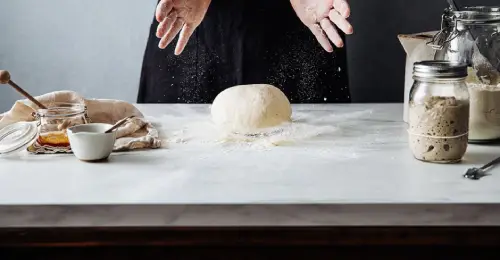
Experiment with different types of flour, such as whole wheat, rye, or bread flour, to find the perfect balance for your desired bread flavor and texture.
Hydration Percentage
The amount of water in your dough determines its moisture content and texture. Higher hydration percentages produce a more open crumb and chewier texture, while lower hydration leads to denser bread.
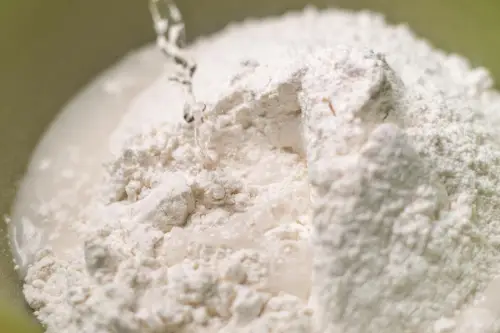
A higher hydration level, where the starter is more liquid, can produce airier loaves, while a stiffer consistency may yield denser bread. Adjust the hydration to achieve the desired consistency and mouthfeel of your bread.
Temperature
The temperature you maintain your starter and dough influences fermentation and flavor development. Warmer temperatures speed up fermentation, leading to a quicker rise and potentially milder flavors.

Cooler temperatures allow for a slower, more complex flavor development and a longer rise. Find the sweet spot that suits your desired flavors and textures.
To illustrate this point, consider the following table that shows the variables that can affect the flavor, texture, and rise of your bread:
| Variable | Flavor | Texture | Rise |
| Flour type | Nutty, sweet, earthy | Dense, chewy, crispy | Depends on gluten content |
| Hydration percentage | Tangy, sour, mild | Moist, airy, tender | Depends on amount of gas produced |
| Temperature | Mild, sweet, fruity | Fluffy, soft, elastic | Depends on yeast activity |
Feeding Frequency
Feeding schedules and environmental conditions are pivotal in sourdough maintenance. How often you feed your starter depends on its activity and baking needs.
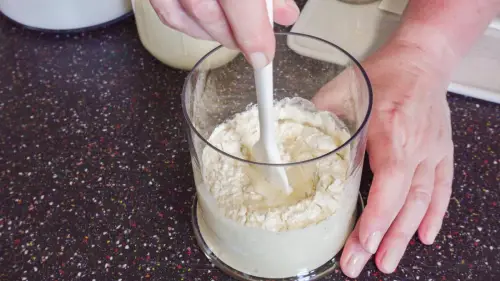
A more frequent feeding schedule, like twice a day, can lead to a more active and robust starter, while less frequent feedings, like once a day, may produce a milder flavor profile. Find a rhythm that suits your style and goals.
Remember, the age of your starter isn’t a decisive factor in these considerations. Instead, focus on creating the right environment for your starter to thrive and enhance your bread’s qualities.
Debunking Some Common Misconceptions
Sourdough starters have gained a cult following in baking, but some myths and misconceptions must be addressed. Let’s separate fact from fiction and explore the truth about sourdough starters.
Myth: The unique taste of San Francisco sourdough is due to a special yeast.
Reality: The distinct flavor of San Francisco sourdough comes from a combination of factors, not a special yeast. Each sourdough starter develops its unique flavor based on its environment, the type of flour used, and how it’s fed.
San Francisco sourdough is known for its tangy taste from specific methods and conditions used during bread-making. Bacteria like Lactobacillus sanfranciscensis play a role in creating its unique flavor profile.
So, it’s not about a special yeast exclusive to San Francisco but rather the overall fermentation process and specific techniques used in the region.
Myth: The older the sourdough starter, the better the quality.
Reality: The age of your sourdough starter alone won’t guarantee better quality bread. Other factors like the type of flour, hydration level, and environmental conditions play a bigger role.
A young, well-maintained starter can actually yield excellent bread, while an older one that’s been neglected may not perform as well. “Hundred-Year-Old Sourdough Starter” doesn’t necessarily translate to superior flavor or quality.
Starting your sourdough journey gives you the freedom to experiment and allows you to create your unique piece of bread-making history.
Myth: Determining the age of a starter is straightforward.
Reality: Figuring out how old a sourdough starter is can be tricky. The microbes in the starter change over time, making it hard to tell which ones are original and which are new. Be cautious of claims about ancient starters, like ones from the Middle Ages, as they may not be proven.
It can be frustrating when you want to know how old your starter is because there aren’t clear signs of its age. Some people think older starters are better, but there’s no definite way to know the exact age of a starter.
Even if someone has used the same starter for years, it’s uncertain how long it has been around. One reason it’s hard to determine age is that the bacteria and yeast in the starter are always evolving.
As the environment changes, the composition of the starter changes too. So, even if someone has used the same starter for a long time, it may have changed a lot since it was first created. Ultimately, what matters more than age is how healthy and active the starter is.
If you take good care of your starter by feeding it regularly and keeping it at the right temperature, it will make high-quality bread, regardless of age.
Do sourdough starters get more sour with age?
Basically, it’s flour and water that have been left to ferment over a while. As the starter ages, it becomes more acidic, which results in a more sour taste.
Fermentation involves the breakdown of carbohydrates in the flour, which releases lactic acid bacteria. These bacteria produce carbon dioxide, which causes the dough to rise and produce acids, giving it its characteristic sour flavor.
Developing a sourdough starter is a gradual process that takes time and patience. When you start a starter, it will be relatively bland, but over time, it will grow stronger and more complex. This is because the acid-producing bacteria in the starter multiply and become more dominant as the starter ages.
One important factor in the development of a sourdough starter is hydration. The more water you add to the starter, the more acidic and sour it will become. This is because the acid-producing bacteria thrive in an environment with high moisture levels. Add more water to increase the starter’s hydration to create a more sour-tasting bread.
Another factor that can affect the taste of a sourdough starter is temperature. The ideal temperature for sourdough fermentation is between 70°F and 85°F. If the temperature is too low, the fermentation process will slow, and the sour taste will be less pronounced. Fermentation will speed up if the temperature is too high, but the bread may become too sour and acidic.
Is it safe to eat an old sourdough starter?
If you are a fan of sourdough bread, chances are you have a starter at home. A sourdough starter is a mixture of flour and water fermented by wild yeast and bacteria. The fermentation process produces lactic acid, which gives sourdough its signature tangy taste and chewy texture.
However, a sourdough starter is a living organism that requires regular maintenance. If not taken care of properly, the starter can develop bad bacteria or mold that can make you sick. The good news is that sourdough starter is generally safe to eat as long as it is not contaminated with mold or other harmful bacteria.
It’s better to be safe than sorry about moldy sourdough starters. Mold can produce toxins that harm humans and cause nausea, vomiting, and diarrhea. If you notice mold on your sourdough starter, it’s best to discard it and start over.
That being said, it’s important to note that all sourdough starters will eventually develop a layer of hooch, a liquid that forms on the surface of the starter when it has been neglected. Hooch is not harmful and can be stirred back into the starter before use. However, if the hooch is brown or pink in color, it may be a sign of bad bacteria or mold, and the starter should be discarded.
To prevent your sourdough starter from going bad, it’s crucial to keep it fed and at the right temperature. Ideally, you should feed your starter every 12 hours and store it in a warm spot in your kitchen, such as on top of the fridge or near a window. Make sure you use clean utensils when handling your sourdough starter.
Why is my sourdough starter not sour enough?
Sourdough bread is beloved for its unique tangy flavor and chewy texture. However, for some bakers, achieving the perfect sourness can be challenging.
You can take a few simple steps to make your sourdough more sour and delicious. And the first thing to consider is the hydration level of your starter.
A higher ratio of flour to water will result in a more concentrated mixture, allowing the acid-producing bacteria to thrive and produce a more pronounced sour flavor. Maintaining your starter at a lower hydration level will help to achieve this.
Another tip to make your sourdough more sour is to use whole-grain flour. These flours contain higher amounts of the phytic acid that feeds the bacteria in your starter and produces that wonderful sour flavor.
So, instead of reaching for your usual all-purpose flour, consider using whole-grain wheat, rye, or spell for a more complex flavor profile.
Lastly, when feeding your sourdough starter, consider keeping the hooch or brown liquid layer that forms on top instead of pouring it off. This layer indicates that your starter is hungry and needs to be fed.
By incorporating the hooch back into your starter, you’ll give it the nourishment it needs and add to the sour flavor of your bread.
The Bottom Line: Old Sourdough Starter Isn’t Necessarily Better
The myth that older sourdough starters are always better is just that, a myth. While an older starter may have unique flavor characteristics, it is not the sole determining factor of exceptional sourdough.
Rather, it is through a balanced approach of scientific understanding and personal experimentation that bakers can truly create outstanding sourdough bread. Sourdough starters are living organisms that require proper care and maintenance.
Bakers can make delicious bread that reflects their preferences by understanding the basics of sourdough starters and tweaking variables such as flour type, hydration percentage, and temperature. So, whether you’re a seasoned sourdough veteran or just starting, remember to care for your starter diligently and enjoy exploring and experimenting.

